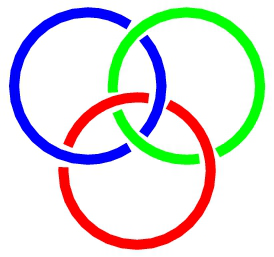Orateur
Dr
Thomas Neff
(GSI Darmstadt)
Description
The Fermionic Molecular Dynamics (FMD) [1] is a microscopic
model for the description of nuclei in the p- and
sd-shell. Many-body basis states are Slater determinants of Gaussian
wave packets localized in phase space. The wave packet basis is very
flexible and includes the harmonic oscillator shell model basis as
well as Brink-type cluster states as limiting cases. The width of the
wave packets is a variational parameter and allows to describe loosely
bound halo nuclei. The intrinsic Slater determinants are projected on
parity, angular momentum and total linear momentum to restore the
symmetries of the Hamiltonian.
We discuss the spectrum of 12C with a special emphasis on the
structure of the first excited 0+ state, the famous Hoyle state. In
the FMD approach the Hoyle state is found to be dominated by dilute
alpha-cluster configurations, a picture that is confirmed by
electron scattering data for the transition from the ground into the
Hoyle state [2]. The FMD wave function can also be
decomposed into N hbar Omega shell model configurations illustrating
the highly coherent nature of the Hoyle state.
As another application we present recent results for neon isotopes [3].
The low lying states of 17Ne and 18Ne can be understood essentially
as systems of a 15O or 16O core and two protons in weakly bound s- or
d-orbits. In FMD calculations we find in 17Ne a large
admixture of spatially extended s^2 configurations explaining the
large experimental charge radius. Higher lying excited states of
18Ne have 14O-4He cluster nature. Clustering
becomes even more important in the heavier isotopes
19-22Ne. For example the parity doublets in 19Ne are
related to the coexistence of 16O-3He and
15O-4He cluster configurations.
[1] T. Neff and H. Feldmeier, Eur. Phys. J Special Topics 156, 69 (2008).
[2] M. Chernykh, H. Feldmeier, T. Neff, P. von Neumann-Cosel and A. Richter,
Phys. Rev. Lett. 98, 032501 (2007).
[3] W. Geithner, T. Neff et al., to be submitted.
Auteur principal
Dr
Thomas Neff
(GSI Darmstadt)

